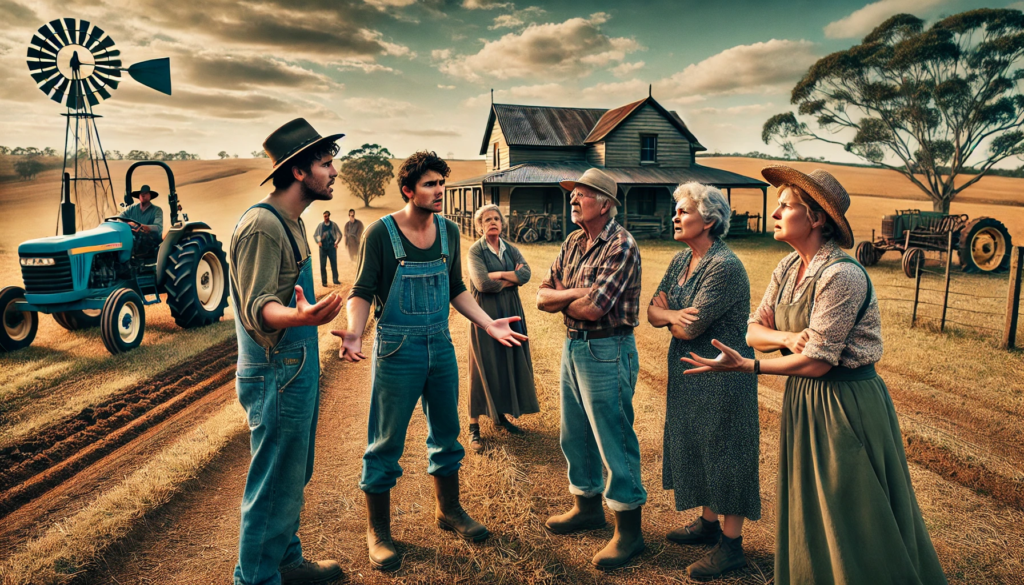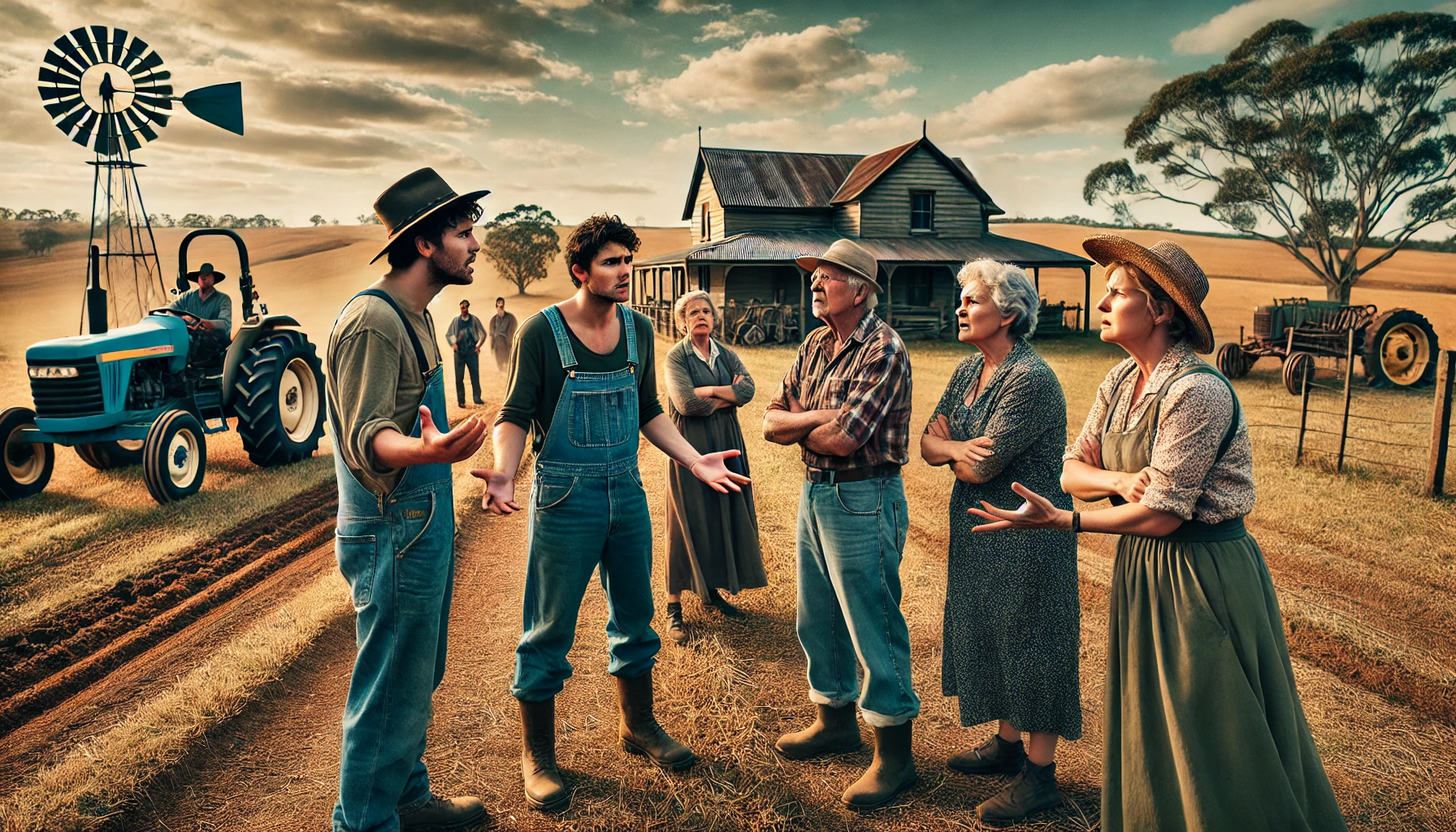Talkin’ ’bout my intergenerational business

Independent Contributor
Intergenerational Business 1
In 2018 I completed an MBA, part of which was a project I was given by MBIE (Ministry of Business and Innovation) on ‘Why are businesses not planning succession earlier’. After interviewing 6 Building businesses in Wellington and 6 Vineyards in the Hawkes Bay, the common theme was Intergenerational communication issues. The following 6 articles is a series on this topic as relates to Intergenerational Business.
Sustainable farming actually means getting succession right first…..otherwise what is the purpose?
Bridging the Generation Gap in the World of Business
Constant challenges are a normal part of running a business. There are a lot of decisions to make and a constant stream of issues to resolve day after day. The process is complicated enough as it is, but it can get even more difficult if the people who are running the business come from different generations. This is a common concern in family businesses where two or more generations need to work together.
When people are born several decades apart, it is only natural for them to think differently and have a different approach to doing things. But when forced into an environment where they have to work together on a regular basis such as in running a business, there needs to be a broader understanding and acceptance between the generations so that goals can be met and success can be achieved.
With that being said, these articles will bring to light the differences in attitudes and perspectives that are typical of each generation. Although there will be a lot of comparisons involved, there is no intention of making any generation seem superior to others. The articles merely aim to highlight the differences and discuss the positive and negative effects that these differences can have on business operations.
An Overview of the Generations
Categorising people into generations can be highly subjective but for our purposes, we will refer to the generally accepted classification by year of birth. Following are the five different generations based on this grouping.
Traditionalists (Born between 1900 and 1945)
People who were born during this time experienced a lot of hardships due to tight finances and the beginning of a major war that further drove economies down. There was not a lot of available entertainment at the time, so the traditionalists had to rely on their own creativity for fun and relaxation.
Baby Boomers (Born between 1946 and 1964)
These people were born in the wake of a very long world war. Most of their childhood was filled with horrific war stories from older family members who had survived the difficult years. They know of the adversities that went on but did not really experience much hardship during their life.
Gen X (Born between 1965 and 1979)
This generation witnessed the drastic improvements in technology as they were growing up. They got their first cell phones as young adults and lived relatively comfortable lives.
Gen Y or Millennials (Born between 1980 to 1994)
According to popular opinion, the millennial generation is one that is quite spoilt, mainly because corporal punishment, which was commonplace in previous generations, is now frowned upon. Gen Y people were born at a time when the economy was stable and so they got to experience a lot of perks growing up.
Gen Z (Born between 1995 to 2009)
This generation is even more privileged than the previous one. They hardly need to work and things are basically handed to them on a silver platter. Physical punishment is practically non-existent and all the kids are glued to their phones.
Society, technology and lifestyles have changed dramatically throughout the 20th century. This has led to vast disparities in the attitude and schools of thought across the generations. Experiences during the childhood years are a huge contributing factor to the kind of risk of appetite and ethics that a person applies in the different aspects of their life, including the running of a business. In particular, the adversities that they have faced and overcome played a great role in fashioning a person’s personality and way of thinking.
Issues in Passing down the Family Business
The farther apart two generations are, the bigger the challenges when it comes to passing down a family business. Some of the most evident concerns are the differences in attitude and risk appetite.
Different Attitude and Way of Thinking
Let’s say the business was founded by the patriarch of the family who is a baby boomer, characterized by being hard-working to the point of sacrificing family time and relaxation. He now needs to pass the torch to a millennial grandchild whose generation is typically focused on leisure with just some work interspersed here and there. There would certainly be a lot of trepidation on both sides, but things don’t necessarily have to be as bad as people think.
Level of Experienced Adversity and Risk Appetite
Even Aristotle in 350 BC once said that “young people are high-minded because they have not yet been humbled by life, nor have they experienced the force of circumstances.” The truth of this statement can be seen in young people who have not had a hard life. Without being exposed to adversities, they did not develop a great appetite for risk. After all, why risk anything when they already have everything?
According to the results of a survey from a UBS Investor watch report, 43% of baby boom were hesitant to start a business because of the risks involved. This is coming from a generation that has dealt with a lot of hardships. On the other hand, millennials have not experienced as much adversity and 77% of them do not want to deal with the risks of start-ups. Furthermore, 90% of millennials prefer going into the corporate scene rather than starting a business because this is the easier and more convenient route.
Increasing Rate of Divorce
A family business is supposed to be passed down throughout the generations. With the rising instances of divorce, family businesses these days rarely make it to the second generation. Instead, they end up getting dissolved following the divorce, or sold to a third party.
Bridging the gap between generations in a business is possible, but because of the many issues involved, it is clear that the process will be complicated and may even require assistance from external sources.
The next article Intergenerational Business 2 looks at Baby Boomers and Gen X in the workforce.
Intergenerational Business 3 then discusses Millennials and Gen Z.
Intergenerational Business 4 suggests strategies or learnings to manage or avoid Intergenerational Conflict in business.
Intergenerational Business 5 looks at real leadership.
Intergenerational Business 6 pulls 1-5 together to discuss real examples of Intergenerational Sustainable Farm Business Transition.




